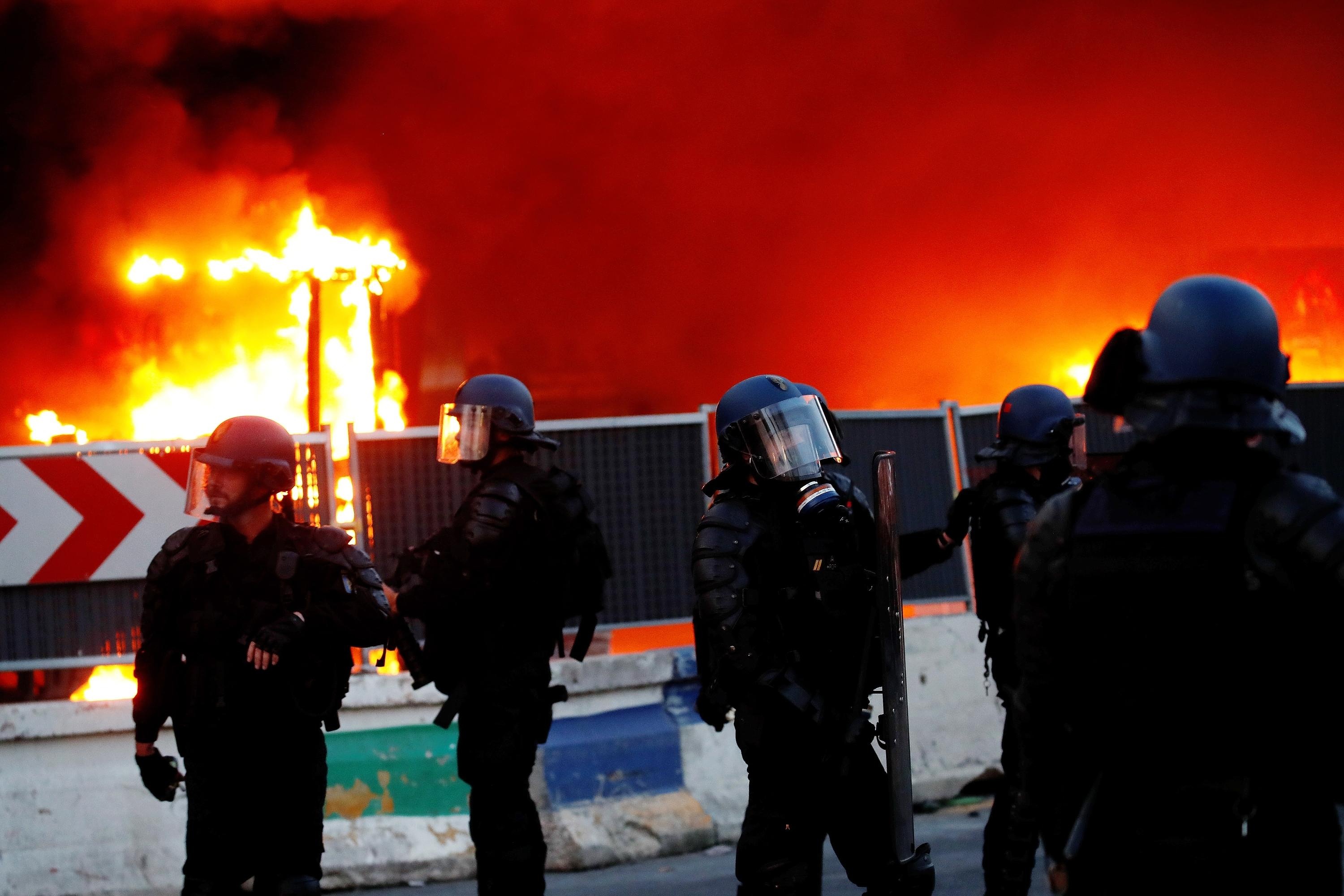Special envoy to Montpellier
What goes on in a sculptor’s head? It is this strange alchemy that the retrospective “Toni Grand” (1935-2005) proposes to explore, all in supernatural forms and mathematical titles. His creatures of wood and flesh between the living and the fossilized - a tree cut in a logical sequence, a fork almost animal in its flexibility or its underwater darkness, a set of giant pins whose handle follows the movement of a fish - transform the Fabre Museum in Montpellier into an archaic and minimal temple. It is a world of poetic reverie and technical virtuosity, of formal research and underlying philosophy. A world of strange beauty, completely apart, which draws, behind its scrolls of arched wood and its improbable constructions, the portrait of an artist of strong nature.
He is there, thin and nervous like a Camargue horse, posing as a young rebel from the protesting 1970s, resolutely off the beaten track, happy with his difference. He is there, as a slightly unphased gentleman in this Portrait of Toni Grand in the workshop of the Mas du Mouton, with the only costume he ever had (weddings and funerals) in 1988 in front of the lens of François Lagarde. He poses as a mocking heir of Marcel Duchamp or as a surrealist character painted by Jean Hélion, behind the incredible flexible cage which crisscrosses the space with its opaque whiteness. This almost wobbly geometry is a construction of wood and polyester laminate which captures real fish, preserved by formaldehyde, whose length and line determine each section of the whole (Untitled, 1988, gift by the artist to the Center Pompidou in 2002). There is in this incongruous alloy a certain madness which would like to catch the beginning of the world and freeze time, like amber catches the prehistoric mosquito in its resin.
Also readExhibition: H.R. Giger, the artist behind “Alien”
“We must not see any symbolic connotation in it. As few connotations as possible in general. But fish are “pieces of the world”. Another part of the real world is summoned. It is a material without value, without detail or story. But I recognize that it is incongruous to bring materials like fish into sculpture. It’s the first time that we put fish and stone on the same level,” Toni Grand explained to Dominique David in 1991, on the occasion of her exhibition at the Museum of Fine Arts in Nantes, under the direction of 'Henry-Claude Cousseau. Why be a sculptor? Yves Michaud asked him in 1983, during his exhibition at the Sainte-Croix Museum in Poitiers. This activity “that no institution legitimizes or legislates responds to intimate, non-operational, urgent and not trivial needs, private perhaps, unjustifiable elsewhere. We are very far from general machines for making meaning,” Toni Grand submits to him, in a dialogue between philosophy and art history.
Toni Grand was born Antoine Grand in 1935 in Grand-Gallargues, Gard, a town overlooking the Petite Camargue plain where dried ponds and marshes line the coastline, which is 12 km away. His father, Maurice Grand, is a farmer. Her mother, Augusta Warnery, calls her Toni. In the scholarly catalog written by her passionate fan club, from Olivier Kaeppelin to Éric Fabre and Alfred Pacquement, Barbara Gaviria establishes the rather astonishing chronology of a fierce artist, who remained anchored in his southern land. All his work exudes wild beauty and a certain stripping down to the essential. This “funny guy who lives in his farmhouse in the Camargue, with horses and bulls, a forge, a guitar”, who “plays flamenco, doesn’t talk much”, said the friend who introduced him to his wife, Lyliane Vasseur, in 1957. A discreet man, he likes “soleares”, these songs of solitude from flamenco. His first school, avant-garde and named Puits aux fleurs, was a farm. He went there on Camargue horse and met a certain Claude Viallat, then in sixth grade. They will meet first, Toni Grand then offers Claude Viallat one of his first sculptures. At that time, in the early 1950s, the teenager worked with wood and iron, taking advantage of his initiation to blacksmithing.
Also read: In Paris, artist Friedrich Pfeffer demonstrates that nature has a soul
What a character! After his baccalaureate in 1955, he did a year of philosophy at the Montpellier faculty. A paradoxical man, this reader of Nietzsche, Heidegger and Lévi-Strauss also obtained his master shepherd diploma at the Bergerie nationale de Rambouillet. Military service forced him to stay twenty-seven months in Constantine from 1958 to 1960. And it was in Algeria that he learned direct carving. He asked to leave the commandos, refused to resort to torture and was transferred alone to a farm, where he raised dogs, even if it meant killing donkeys to feed them, butchering them as he did with the wild boars from his father's hunts. . When he returned to France in early 1960, he was accompanied by his bay Anglo-Arabian horse with a starry white mole on his forehead, named Tout Seul.
The man who was an assistant in the Parisian workshop of the Hungarian sculptor Marta Pan in the early 1960s set up his own workshop in his farmhouse. There reigns silence for the birth of a work which borrows from nature and geometry, from the evocative power of poetry and from contemplation before a certain mystery of the living. First lead, polyester, stainless steel and cast aluminum, then drawings in black Ripolin (industrial paint) and tar on Ingres paper, then wood which became his favorite material until 1975. He has a way of cutting it up in series, continuing it with a sculpture, rounding it off and rendering the driftwood a velvety black with graphite which is as skillful as a luthier, thought as a minimalist. “Forgetting, calm, surprise, said Toni Grand”, summarizes writer Olivier Kaeppelin. Toni Grand deserved his name: he inspired many artists, from Richard Deacon and Katinka Bock to choreographer Boris Charmatz.
“Toni Grand. Pieces of a possible thing”, until May 5 at the Fabre Museum in Montpellier. Catalog under the direction of scientific curators Olivier Kaeppelin and Maud Marron-Wojewodzki, Sonek/Musée Fabre, €40.

 What is chloropicrin, the chemical agent that Washington accuses Moscow of using in Ukraine?
What is chloropicrin, the chemical agent that Washington accuses Moscow of using in Ukraine? Poland, big winner of European enlargement
Poland, big winner of European enlargement In Israel, step-by-step negotiations for a ceasefire in the Gaza Strip
In Israel, step-by-step negotiations for a ceasefire in the Gaza Strip BBVA ADRs fall almost 2% on Wall Street
BBVA ADRs fall almost 2% on Wall Street Children born thanks to PMA do not have more cancers than others
Children born thanks to PMA do not have more cancers than others Breast cancer: less than one in two French women follow screening recommendations
Breast cancer: less than one in two French women follow screening recommendations “Dazzling” symptoms, 5,000 deaths per year, non-existent vaccine... What is Lassa fever, a case of which has been identified in Île-de-France?
“Dazzling” symptoms, 5,000 deaths per year, non-existent vaccine... What is Lassa fever, a case of which has been identified in Île-de-France? Sánchez cancels his agenda and considers resigning: "I need to stop and reflect"
Sánchez cancels his agenda and considers resigning: "I need to stop and reflect" “Amazon product tester”: the gendarmerie warns of this new kind of scam
“Amazon product tester”: the gendarmerie warns of this new kind of scam “Unjustified allegations”, “promotion of illicit products”… Half of the influencers controlled in 2023 caught by fraud repression
“Unjustified allegations”, “promotion of illicit products”… Half of the influencers controlled in 2023 caught by fraud repression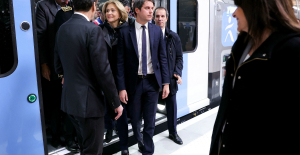 Extension of the RER E: Gabriel Attal welcomes a “popular” ecology project
Extension of the RER E: Gabriel Attal welcomes a “popular” ecology project WeWork will close 8 of its 20 shared offices in France
WeWork will close 8 of its 20 shared offices in France “We were robbed of this dignity”: Paul Auster’s wife denounces the betrayal of a family friend
“We were robbed of this dignity”: Paul Auster’s wife denounces the betrayal of a family friend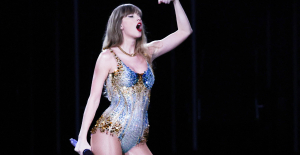 A masterclass for parents to fill in their gaps before Taylor Swift concerts
A masterclass for parents to fill in their gaps before Taylor Swift concerts Jean Reno publishes his first novel Emma on May 16
Jean Reno publishes his first novel Emma on May 16 Cannes Film Festival: Meryl Streep awarded an honorary Palme d’Or
Cannes Film Festival: Meryl Streep awarded an honorary Palme d’Or Omoda 7, another Chinese car that could be manufactured in Spain
Omoda 7, another Chinese car that could be manufactured in Spain BYD chooses CA Auto Bank as financial partner in Spain
BYD chooses CA Auto Bank as financial partner in Spain Tesla and Baidu sign key agreement to boost development of autonomous driving
Tesla and Baidu sign key agreement to boost development of autonomous driving Skoda Kodiaq 2024: a 'beast' plug-in hybrid SUV
Skoda Kodiaq 2024: a 'beast' plug-in hybrid SUV The home mortgage firm rises 3.8% in February and the average interest moderates to 3.33%
The home mortgage firm rises 3.8% in February and the average interest moderates to 3.33% This is how housing prices have changed in Spain in the last decade
This is how housing prices have changed in Spain in the last decade The home mortgage firm drops 10% in January and interest soars to 3.46%
The home mortgage firm drops 10% in January and interest soars to 3.46% The jewel of the Rocío de Nagüeles urbanization: a dream villa in Marbella
The jewel of the Rocío de Nagüeles urbanization: a dream villa in Marbella Europeans: a senior official on the National Rally list
Europeans: a senior official on the National Rally list Blockade of Sciences Po: the right denounces a “drift”, the government charges the rebels
Blockade of Sciences Po: the right denounces a “drift”, the government charges the rebels Even on a mission for NATO, the Charles-de-Gaulle remains under French control, Lecornu responds to Mélenchon
Even on a mission for NATO, the Charles-de-Gaulle remains under French control, Lecornu responds to Mélenchon “Deadly Europe”, “economic decline”, immigration… What to remember from Emmanuel Macron’s speech at the Sorbonne
“Deadly Europe”, “economic decline”, immigration… What to remember from Emmanuel Macron’s speech at the Sorbonne These French cities that will boycott the World Cup in Qatar
These French cities that will boycott the World Cup in Qatar Champions Cup: Toulouse with Flament and Kinghorn against Harlequins, Ramos replacing
Champions Cup: Toulouse with Flament and Kinghorn against Harlequins, Ramos replacing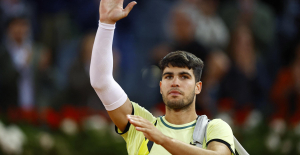 Tennis: still injured in the arm, Alcaraz withdraws from the Masters 1000 in Rome
Tennis: still injured in the arm, Alcaraz withdraws from the Masters 1000 in Rome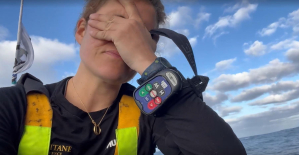 Sailing: “Like a house that threatens to collapse”, Clarisse Crémer exhausted and in tears aboard her damaged boat
Sailing: “Like a house that threatens to collapse”, Clarisse Crémer exhausted and in tears aboard her damaged boat NBA: Patrick Beverley loses his temper and throws balls at Pacers fans
NBA: Patrick Beverley loses his temper and throws balls at Pacers fans






